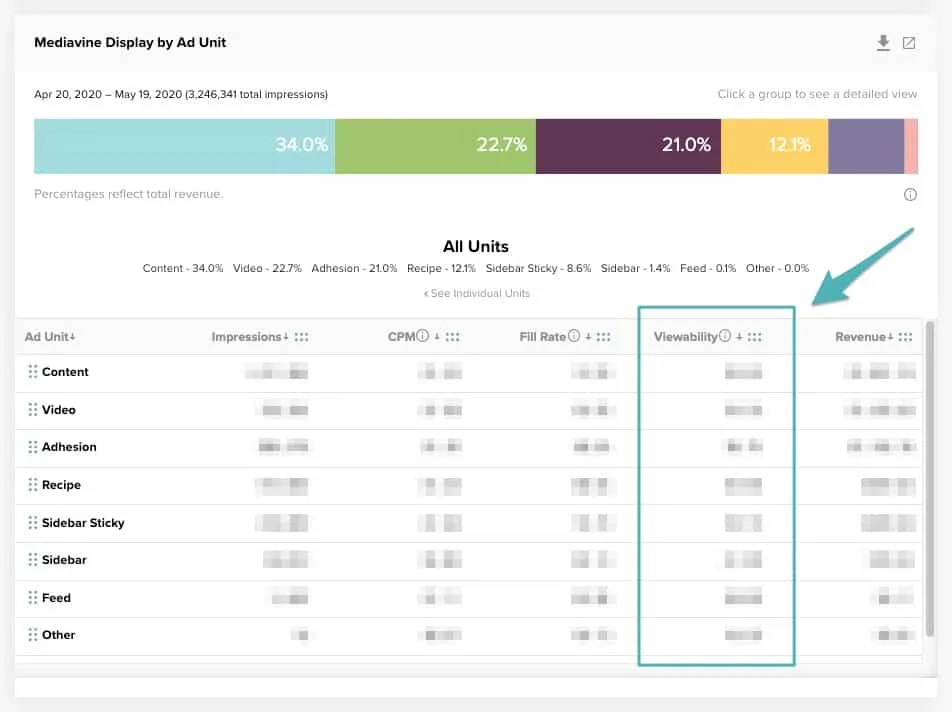Ad Viewability: The Why and How to Make Your Ads More Viewable


Viewability is one of the biggest digital ad trends of the last several years. So what is ad viewability as it pertains to digital ads and how do you improve it?
The authorities on digital ads, known as the Interactive Advertising Bureau or IAB, set the standard for viewability based on the Media Rating Council (MRC) measurement guidelines.
To save you from reading the 14-page MRC Desktop Viewable Impression Guideline as well as the 19-page MRC Mobile Viewable Impression Guideline, we’ll give you the executive summary:
Although they are separate technical implementations and guidelines, both desktop and mobile have the same goal — keeping that ad in the reader’s view, for some amount of time.
Executive summary of the executive summary:
For the ad to be classified as “viewed”, 50% of it needs to be seen by a user for 1 second.
Advertisers are always looking for metrics to know the money they’re spending is working. With “direct response” campaigns, ads that can measure success off a direct action such as an online purchase, it’s easy.
Did an ad on your site lead to a purchase? If so, it worked, and that’s easy to measure.
However, these days, lots of ads are going for “brand awareness,” which doesn’t have a tangible goal that can be measured, such as a purchase. For example, GM or Coca-Cola can’t easily attribute the sale of one car or soft drink to your site and an ad that ran there.
Instead, they look for a metric they can measure, such as whether or not their ad was actually seen. The clever solution? Viewability.

Why is this suddenly important? The concept of viewability has existed for years. It’s risen to prominence now because the technology is there to support it, and offer accurate measurements. Buyers like Group M are only buying on guarantees of 100% viewability, and places like Google Display Network let buyers pay only for viewed ads. AppNexus allows its buyers to buy on Guaranteed Views.
If your ad impression loaded, but wasn’t seen, the advertiser may not have to pay for it, based on their purchasing preferences with the exchange.
That’s a big deal to your bottom line.
As the rest of the industry adapts to this standard, you will need to as well. Years from now, it will be standard that if you want to be paid for the ads that are served on your site, you’ll have to make sure they’re always viewed. Now is the time to focus on improving your viewability.
Shameless plug alert — if you’re a publisher with Mediavine, we already put the viewability score for each of your ad units in your dashboard, because it’s something we’ve focused on since day one.

For everyone else, there are plenty of third party services that you can pay for viewability reports, but we’d recommend starting with Google’s own ActiveView, which is provided for free with Google DFP (Doubleclick for Publishers).
We’ve taken many steps at Mediavine to make sure our network sees an average of 70% viewability or higher (70% is considered “tops” by most industry standards, and the goal for any ad unit).
Some of these tricks include:
Stay up to date with the latest from Mediavine
As the digital advertising landscape evolves, the need for effective data management and compliance has never been more critical. As part of our commitment to providing exceptional solutions for our …
Welcome to the much-anticipated release of the fifth-annual edition of “The Best eCPM Days of the Year” calendar. Each year, we analyze historical trends to provide publishers with a graphical …
“Let’s talk about politics.” We know. This is a phrase absolutely no one wants to hear uttered around the dinner table or backyard barbecue these days. But hear us out. …